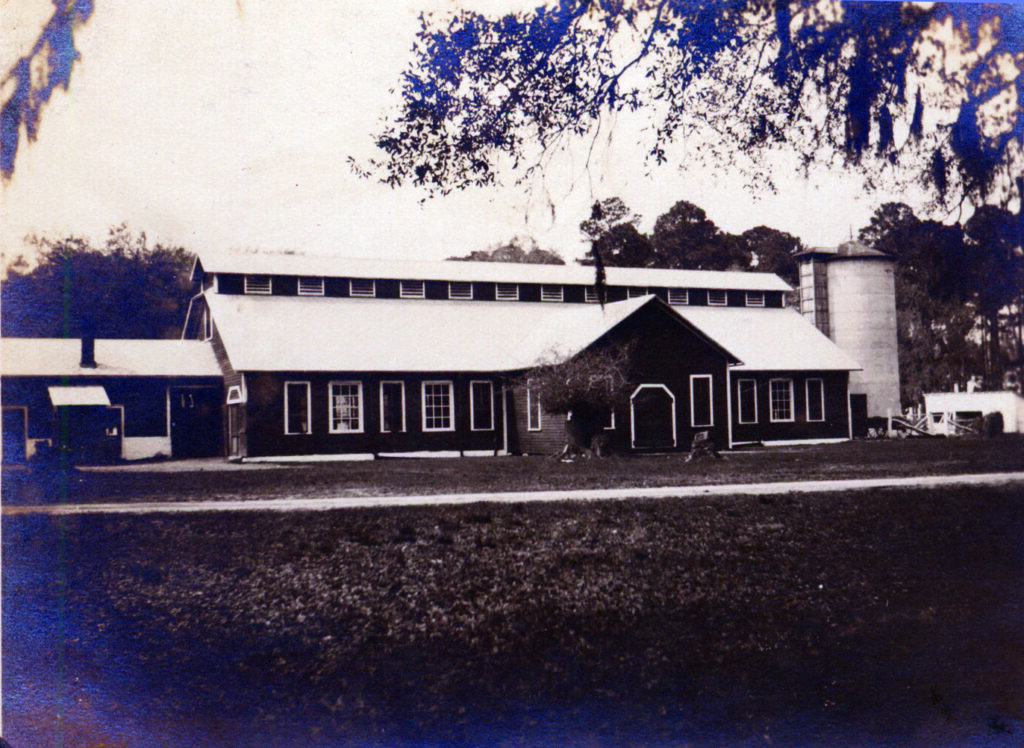Old silo a lonely relic of a farm that once fed the island’s wealthy
BY FRAN WORRALL
A looming gray tower stands alone in the woods a mile or so north of Jekyll Island’s National Historic Landmark District, along an unpaved trail just off Riverview Drive. It’s an historic structure—at one time a critically important one—yet no signs point to it, and no marker commemorates its past.
The tower—an old silo, now in ruins—is all that’s left of a once-bustling dairy farm that supplied fresh milk, butter, and eggs to the wealthy winter residents of Jekyll Island, including the Rockefellers, Morgans, Vanderbilts, and Pulitzers. “The farm supported the Jekyll Island Club kitchen,” says Andrea Marroquin, curator of Mosaic, Jekyll Island Museum. “Because there was no bridge to the island, much of what residents consumed had to be grown locally.”
According to Marroquin, in the early years of the Jekyll Island Club (established in 1886), fresh cream and butter were imported, but members complained about their quality. By the 1910s, the Club was operating its own dairy, with the surplus sold in nearby Brunswick. The operation continued until 1930.
The history of the farm doesn’t end there, though. In 1951, it was converted into a convict camp. “It was used to house state prisoners who were brought to the island to build roads and create improvements, such as reroofing cottages and digging ditches,” Marroquin says. The work was done in preparation for the opening of the island’s new causeway to the general public.
Eventually, the farm fell into disrepair. Its large wooden barn was leveled. But the hulking silo remains.
Taylor Davis, historic preservationist with the Jekyll Island Authority (JIA), says the structure, 32 feet tall, is made of tabby, a type of concrete formed from a mixture of lime, sand, water, and crushed oyster shells. It was a popular building material for early coastal settlers, who found it to be more durable than wood, which deteriorated in the humid climate. “Tabby buildings are found along the southern coast of the United States, primarily in Georgia, Florida, and South Carolina,” he explains, noting that the Jekyll Island dairy silo falls into the Tabby Revival category, a term given to tabby made between 1880 and 1925. In addition to the original ingredients, Tabby Revival includes cement to make it harder.

As a boy growing up on nearby St. Simons Island, Davis often visited the silo with his friends. “We’d tell ghost stories. It was an eerie place.”
The JIA manages the structure now, although it requires little to no upkeep. And while many people don’t know it exists, tourists will occasionally ask for directions. “Part of its charm is the fact that it’s an outlier, ” Marroquin says.
Davis agrees. “The lack of signage and the absence of interpretation is important. People typically discover the silo on their own, and they get the feeling that no one else knows about it,” he says. “It’s a hidden gem that stands as a testament to the island’s storied past.”


